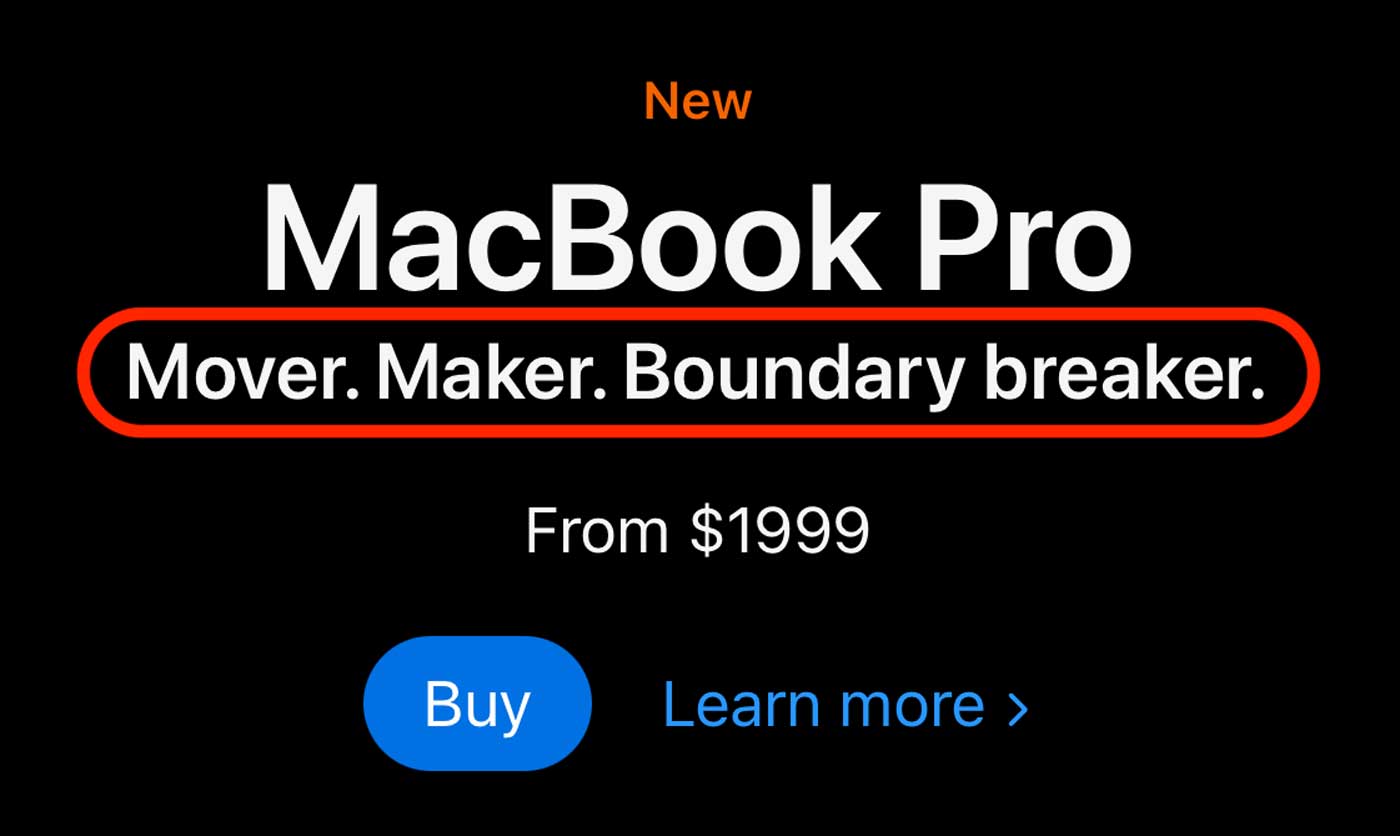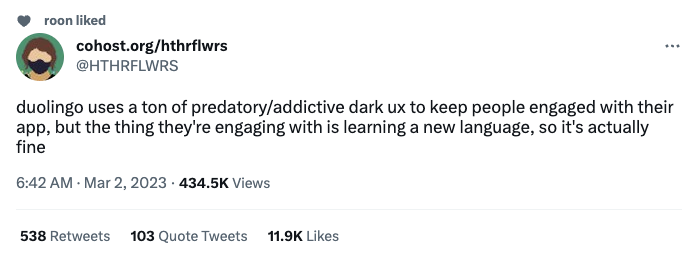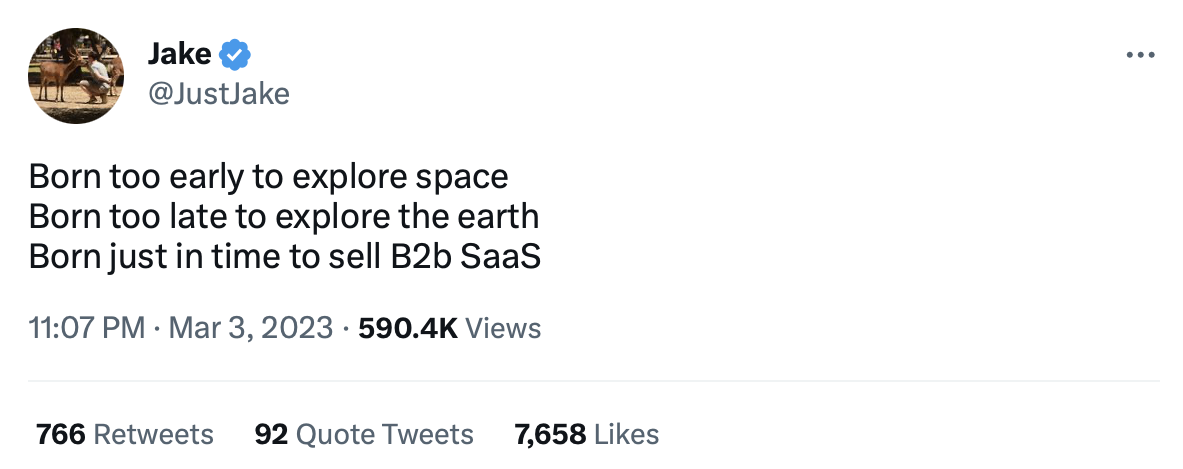Happy almost St. Patrick's Day! With a last name like O'Grady, it may not shock you that I have an Irish passport and a tendency for sunburn. And so I greet you with one of my favourite Irish blessings:
"May your home always be too small to hold all your friends."
This week we have 3 insights about 3's: 3 rules of 3, 3 questions for adopting features, and 3 things I learned from Ali Abdaal.
Thanks to our sponsors Delighted and Brilliant for helping keep this newsletter free!
As always, if you don’t find this valuable, you can unsubscribe at the bottom of this email. If you like it, tell your friends to subscribe here. It's the number one way to support the newsie. –Neal |
Together with Delighted One of the biggest mistakes startups make? Making products without asking customers if they actually care about them. The easiest way to get actionable feedback from customers is with Delighted surveys. Create customer surveys in seconds your audience will actually enjoy taking. That means higher survey response rates and more actionable feedback.
Get set up in minutes, no technical knowledge required.
Sign up now and collect feedback for free. |
|
|
1. 3 rules of 3 we love Insight from Grace (DC). In honor of the less hyped-up 3-leaf clover ☘️, here are 3 rules of 3 we recommend following. The rule of 3 in advertising:
Never include more than three pieces of information in an ad. Example: This ad from Biddyco has: 1) a before & after, 2) product features, 3) a review. Brand awareness magic!
|
The rule of 3 in copywriting:
Three is the minimum number that makes a pattern, and people are pattern seekers. Group items in threes to make them more memorable. |
The 3 (science-backed) rules of good writing (via Ariyh): - Use short, common, concrete words.
- And short, simple sentences with active voice.
-
To keep your readers’ attention, keep your tone excited, anxious, or hopeful. People are more likely to continue reading if their emotions are stirred up, versus language that’s less stimulating—or just sad.
Each of those rules is pretty straightforward, right? A nice reminder that simplicity packs a powerful punch.
(Btw, there are a LOT of threes in marketing. There’s also the 3% rule and the cult of three clicks! Are there other rules of 3 you use and love?) |
2. 3 questions to ask when adopting a feature
Insight from Jorge Mazel via Lenny’s Newsletter. Tweet via @HTHRFLWRS. To continue the trend of 3's... Duolingo is famous for perfecting the art of gamifying something that’s good for you. |
As the Duo team was figuring out how to gamify language learning, they looked to a logical source for inspiration: games. Including Gardenscapes, a Candy Crush-esque mobile game the team was hooked on. One thing Gardenscapes had that Duo didn’t was a “moves counter,” which showed users the dwindling number of moves they had left to complete a level. |
After months of work, Duo launched their own moves counter—then “expectantly waited for an unmitigated success,” according to Duo’s former Chief Product Officer Jorge Mazal. But what actually happened? Pretty much nothing. Retention and DAUs stayed the same. User feedback was…well, there was hardly any. As you know, every experiment is a chance to learn. So here’s what Mazal learned from it: “Now when looking to adopt a feature, I ask myself: - Why is this feature working in that product?
-
Why might this feature succeed or fail in our context, i.e. will it translate well?
- What adaptations are necessary to make this feature succeed in our context?”
Asking those three questions led the Duo team toward gamification gold, with features like a FarmVille 2–esque leaderboard and irresistible streak rewards.
When you find a feature you love in another product, ask those questions before trying to implement it in your own product. They’ll lead you to what Mazal calls “the right balance of adopting and adapting.” |
3. 3 things I learned from Ali Abdaal
Insights from Ali Abdaal. In April, I'm joining the final cohort of the Part-Time YouTuber Academy from Ali Abdaal (a YouTuber with nearly 4M subscribers clearing about $5M/year in revenue—nuts).
In preparation for that, I've gone through Ali's "YouTube for Beginners" course. Here are 3 things I've learned about content creation:
1. Be an archaeologist, not an architect There are two ways to approach creating content: -
Be an architect. Have everything perfectly planned before breaking ground. For example, scrutinize your topic, audience, offer, and format before ever posting.
- Be an archaeologist. Just start digging holes. When you find treasure, put all your focus there. For example, start making things that interest you, and when you find something that resonates, double down.
Most successful creators got there by just getting started and fumbling around. It took Ali one year and 50 videos to hit 1,000 subscribers. It took MrBeast years. They figured it out along the way.
As Ali says: "The first 50 videos are for you. The next 50 are for your audience."
2. Don't create for algorithms. Create for people. Sure, we write about tactics every week. But what really makes a product or piece of content outpace others is by being exceptional.
So to grow your YouTube channel (or Instagram, or Twitter, or blog): - Create an enticing thumbnail and title so people will watch/read it.
- Make the content interesting and engaging throughout.
- Leave people satisfied so they click on your next post.
It's simple in theory, but incredibly hard to actually do. It takes a ton of practice, and so... 3. The reps are more important than anything
When you're getting started with a new skill, the quantity and frequency of practice are more important than the quality of each session. Whether that's creating videos, crafting Twitter threads, writing newsletters, or building a product—it's better to do it often and consistently.
Focus on developing the habit first. Then double down on getting good.
As Ali puts it: "Get going → Get good → Get smart." –––
Now, if you want to join me in the April cohort of the Part-Time YouTuber Academy to learn how to build a channel to 100k subscribers, make sure to sign up this week. Enrollment closes this Friday—and it's the last cohort they're ever doing.
(In full disclosure, I got to join because I promised to write about what I learned!) – Neal |
|
|
News you can use: -
Here’s a concise rundown of Silicon Valley Bank’s collapse.
-
Highlights from the past week in AI: GPT-4 is coming soon, according to Microsoft Germany’s CTO Andreas Braun. GPT-4 will be multimodal, which could mean advances like text-to-video output. Also, DuckDuckGo, Slack, and Discord are all introducing new AI tools.
-
TikTok isn’t letting the US’s RESTRICT Act bill—which, if passed, could mean a nationwide ban—slow down its product releases. Among them: 1) Keyword Insights, a new tool in the Creative Center that helps you find keywords from successful ads, for campaign inspiration. 2) Series, which lets creators post premium video content behind a paywall. Viewers can then purchase access to that content through in-video links or the creator’s profile.
-
A smattering of additional product releases: Reddit announced Read and Watch, feeds that are optimized for text and video, respectively. Google Trends has a new portal with hourly updates. And Meta is building a decentralized, text-based social network, a potential Twitter competitor.
- Cohort 2 of The Un-Ignorable Challenge is coming in April. If you're looking to build your personal brand, join the waitlist. The first cohort sold out in 6 minutes.
Tool we recommend: Brilliant*
AI won't take your job. Someone using AI will. Luckily, Brilliant helps you level up in cutting-edge topics like AI, data science, and more in minutes a day.
Brilliant has thousands of quick, visual, hands-on lessons that make it easy (but not too easy) to master core concepts from the ground up.
Join over 10 million people and start your 30-day free trial today. * Sponsored by Brilliant |
|
|
Top new marketing jobs
If you're looking for a top growth role, check out the opportunities below from our job board. |
|
|
What did you think of this week's newsletter?
Loved it | Great | Good | Meh | Bad
If you enjoyed this, please consider sharing it with a friend. The number one way to support us is to share us with fellow founders and marketers.
Who's Demand Curve? We’re on a mission to help make it easier to start, build, and grow companies. We share high-quality, vetted, and actionable growth content as we learn it from the top 1% of marketers. We democratize senior growth knowledge. How we can help you grow: -
Read our free playbooks, blog articles, and teardowns—we break down the strategies and tactics that fast-growing startups use to grow.
- Enroll in the Growth Program, our marketing course that has helped 1,000+ founders get traction and scale revenue.
Check out our Sprints: short video courses that are laser-focused on a topic in growth.
Want to build an audience of buyers? Join the waitlist for the Un-Ignorable Challenge. -
Hire our agency, Bell Curve, and we'll grow your startup for you.
Engage with our audience by sponsoring Demand Curve.
See you next week.
— Neal, Grace, Joyce, Dennis, and the DC team. |
|
|
© 2023 Demand Curve, Inc. All rights reserved. 4460 Redwood Hwy, Suite 16-535, San Rafael, California, United States
Unsubscribe from all emails, including the newsletter, or manage subscription preferences. |
|
|
|










